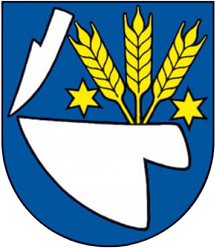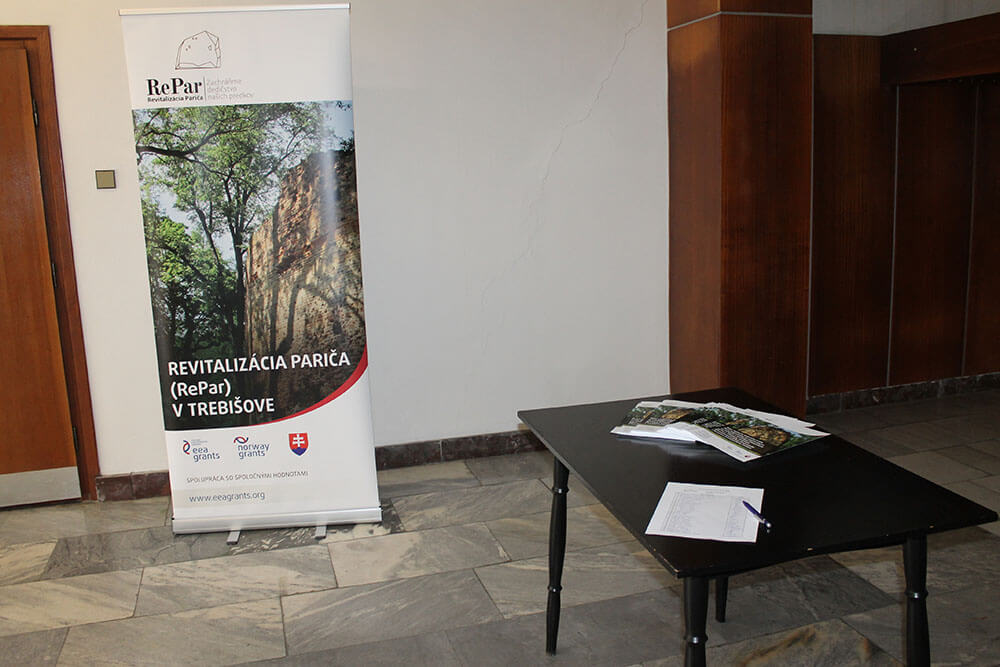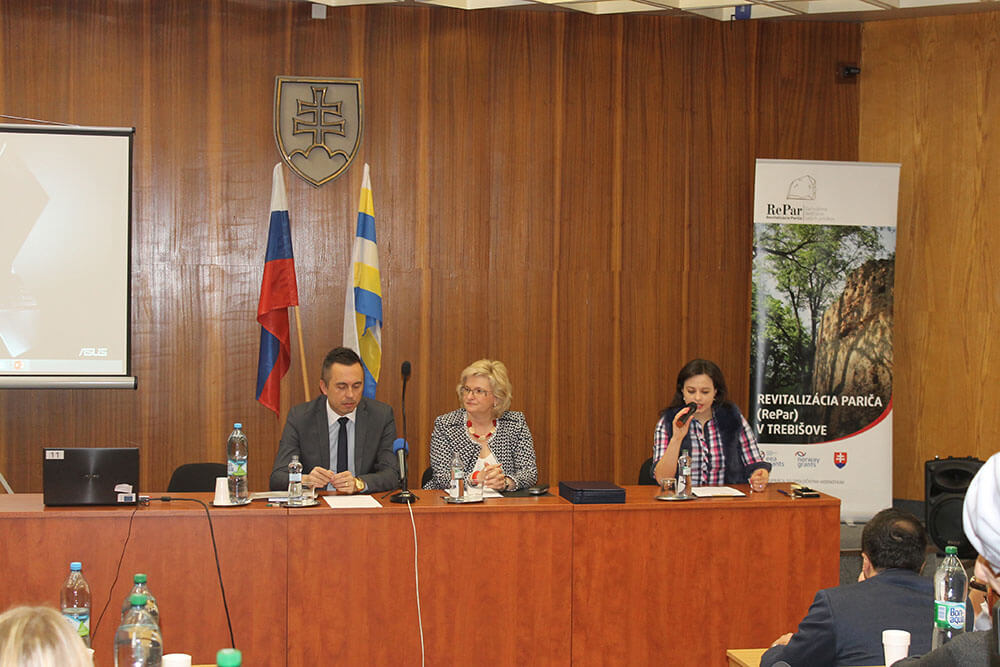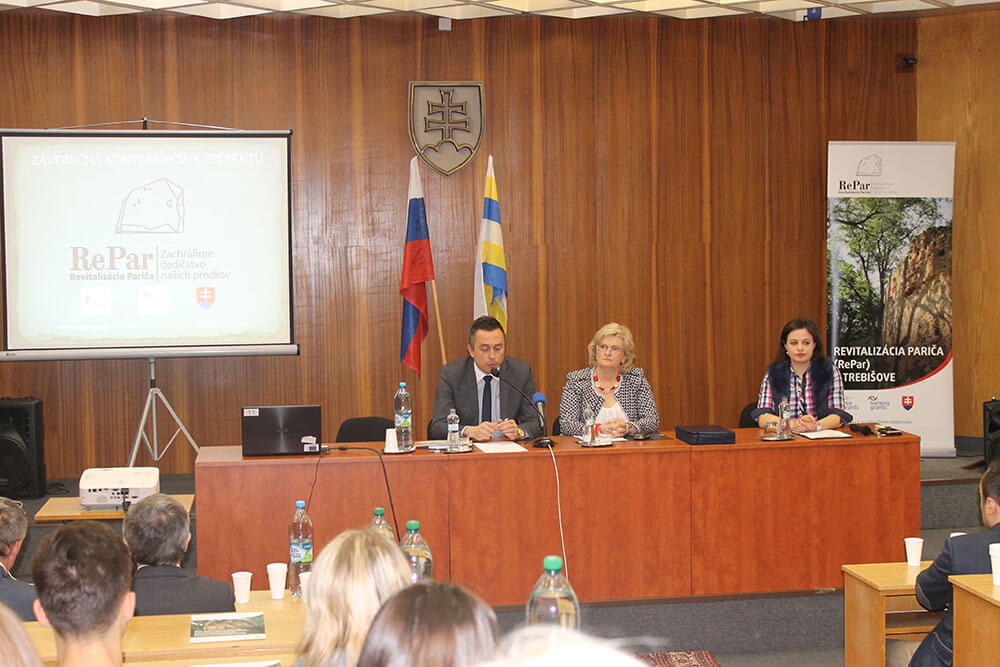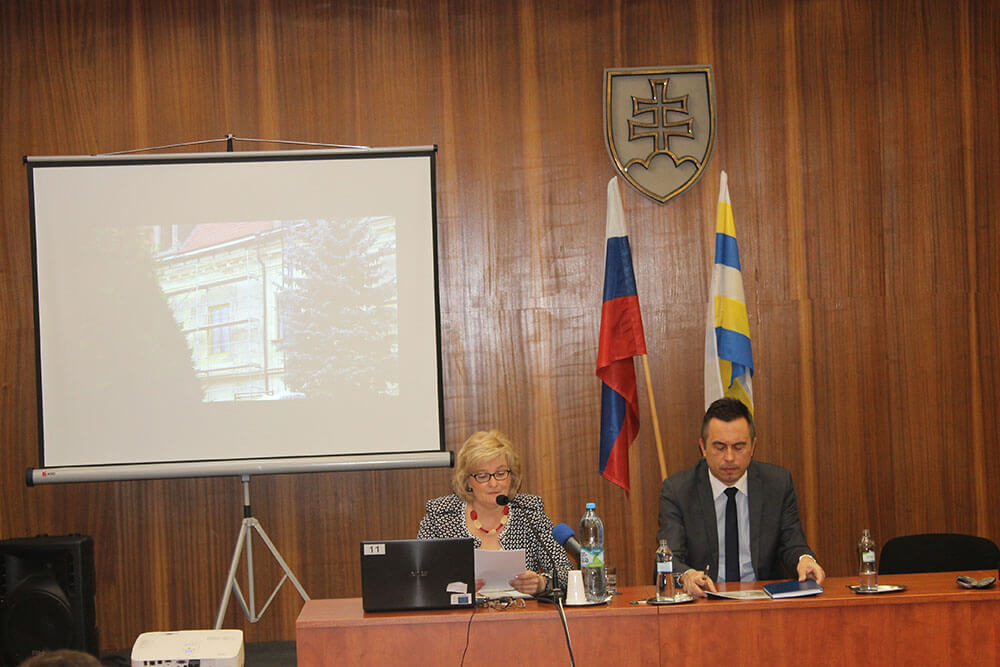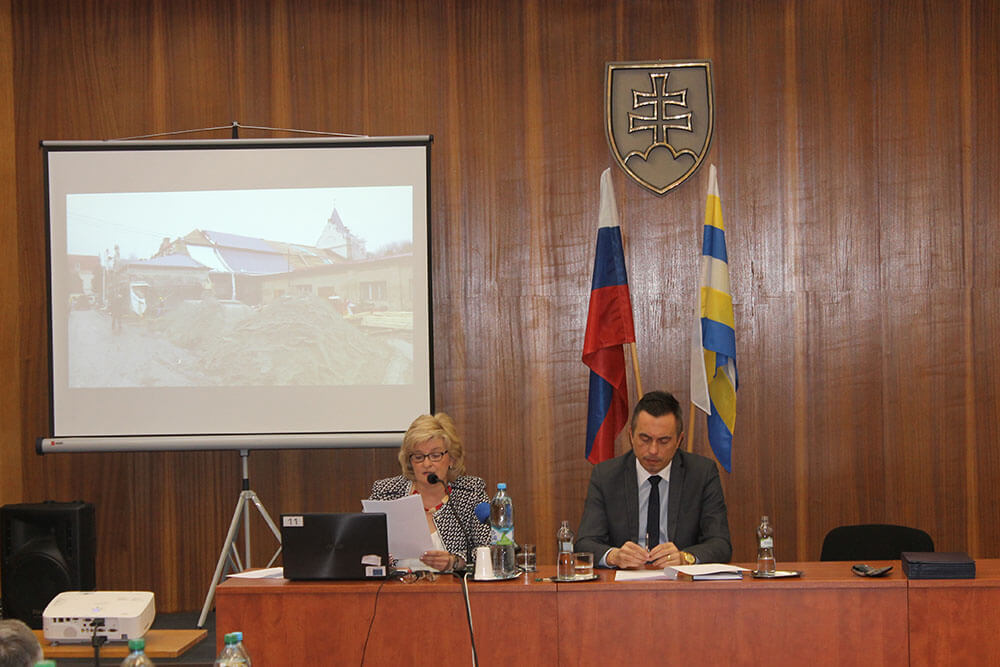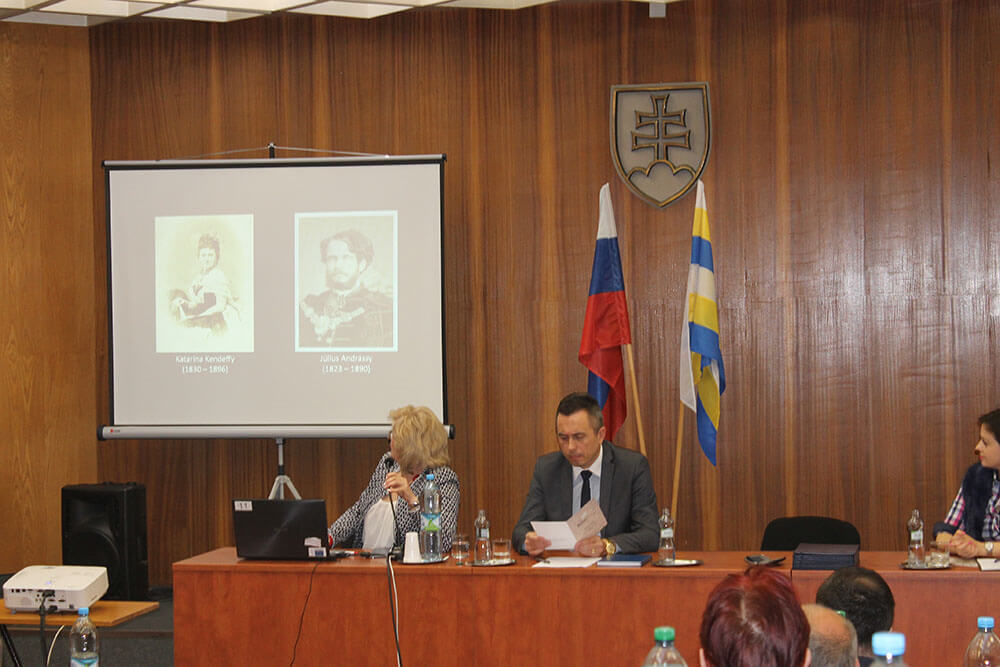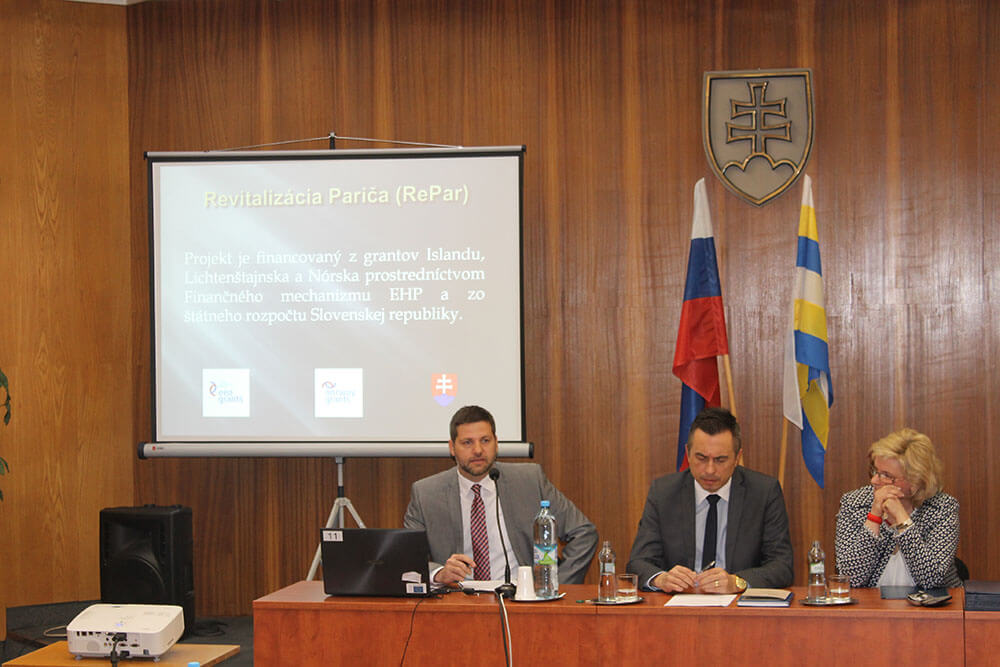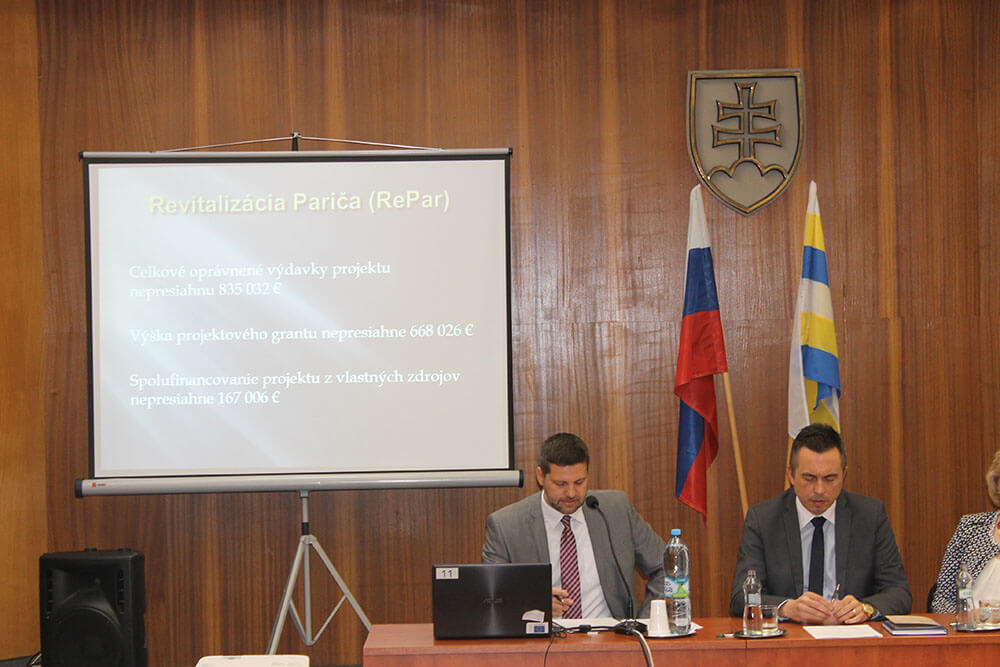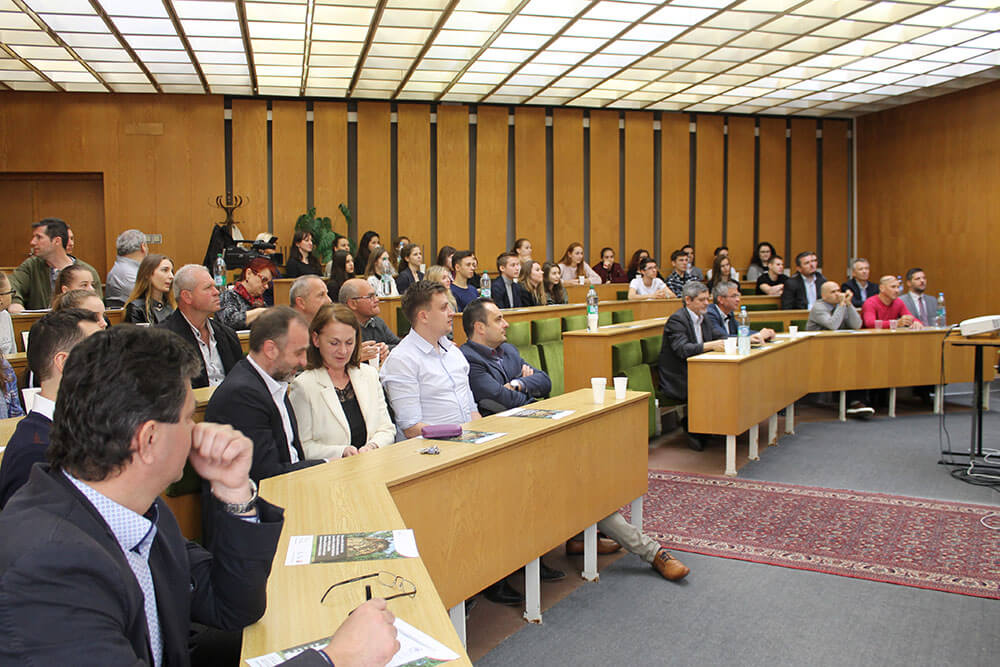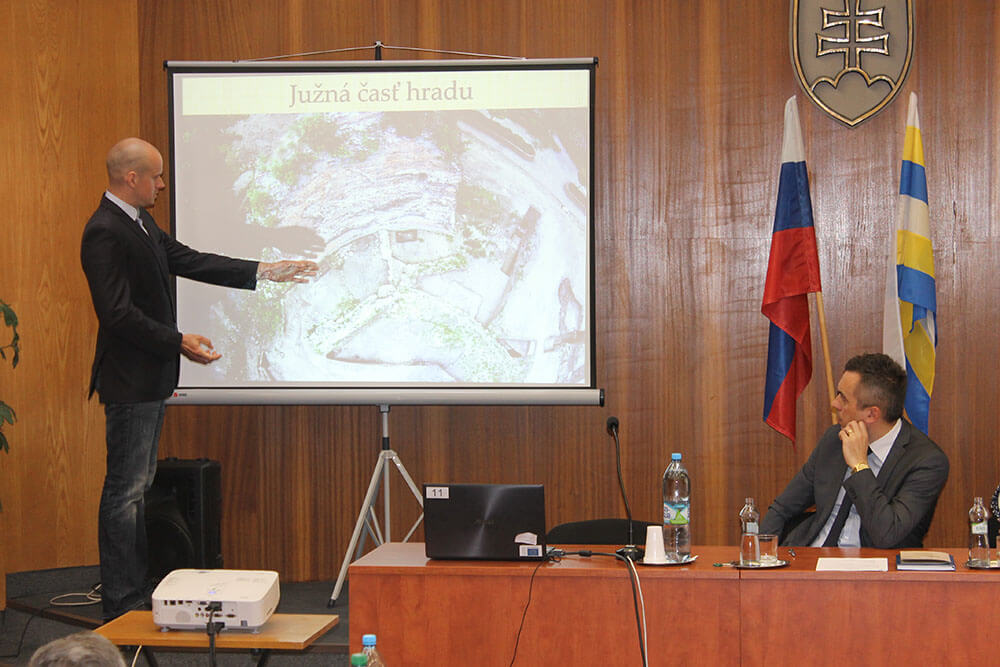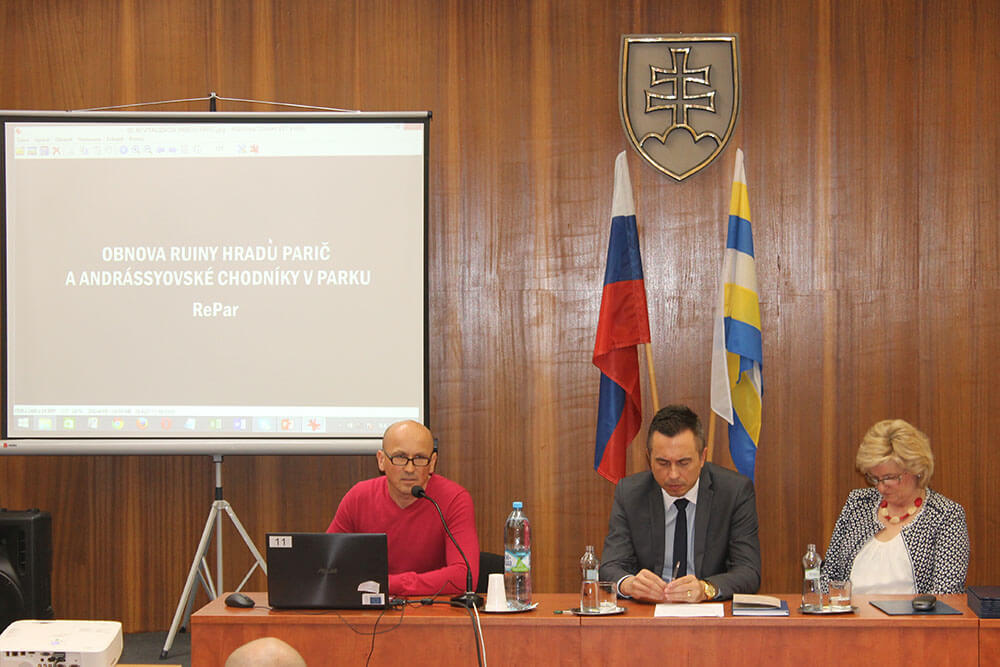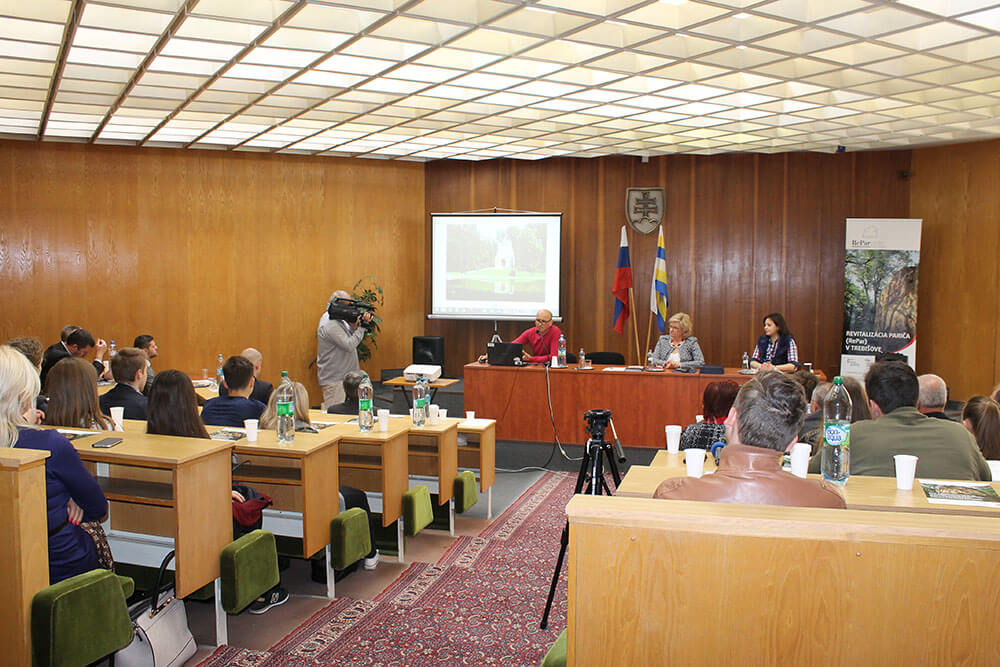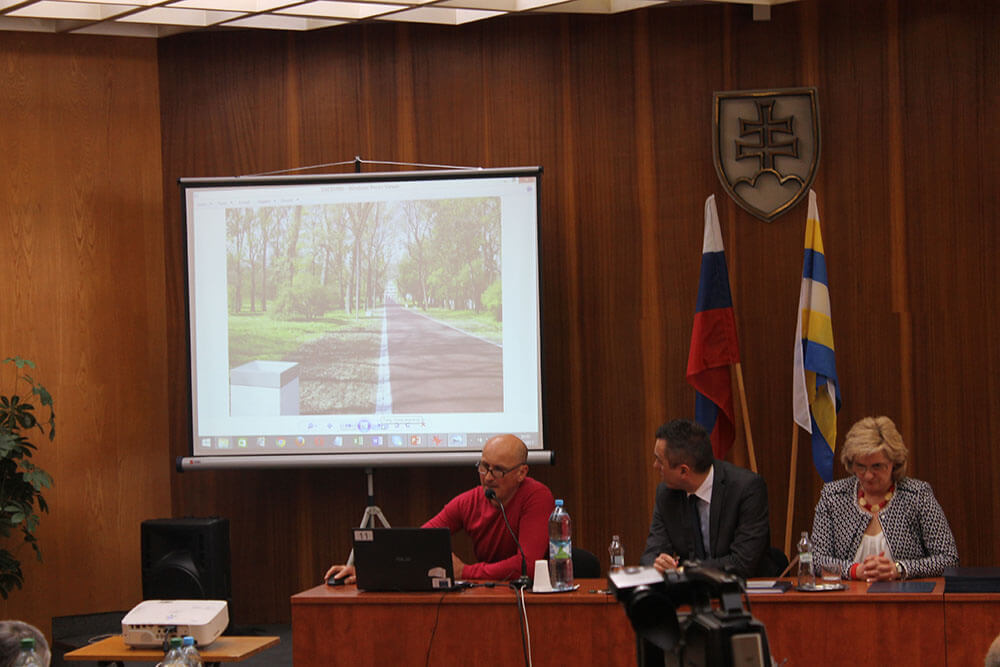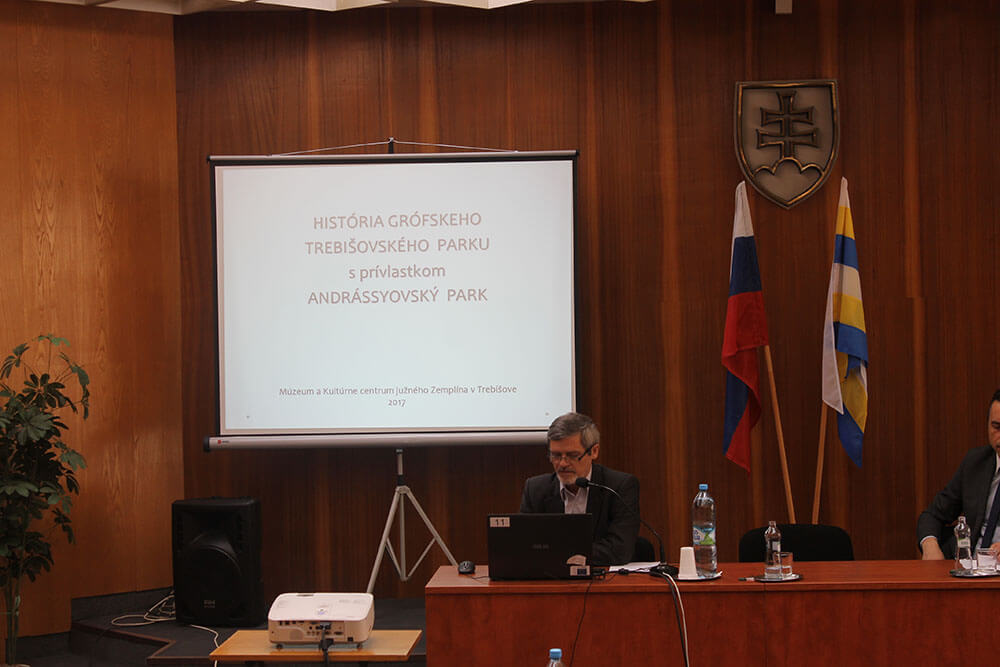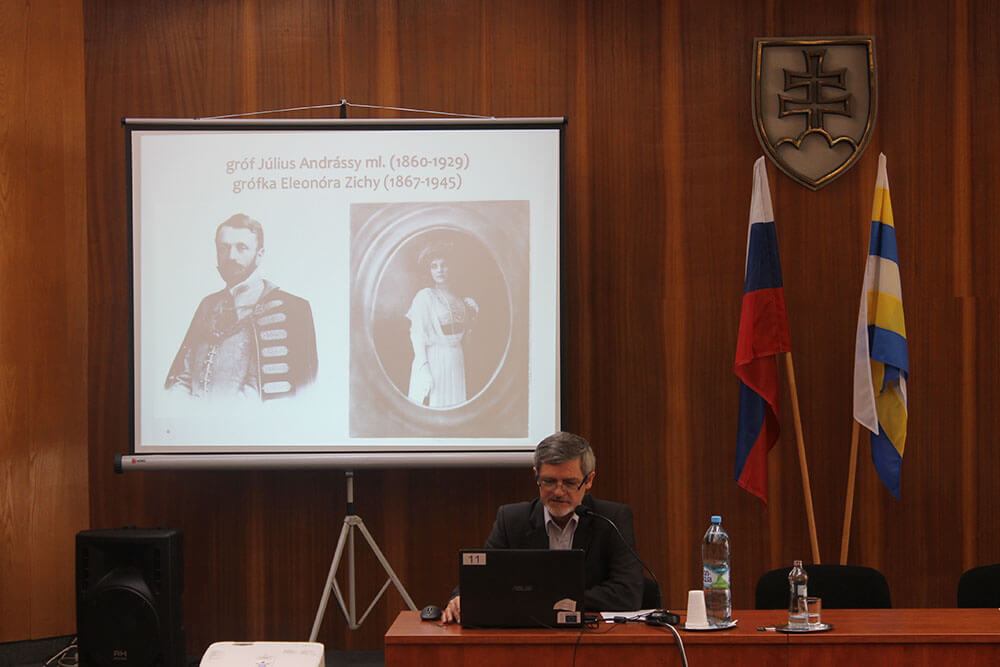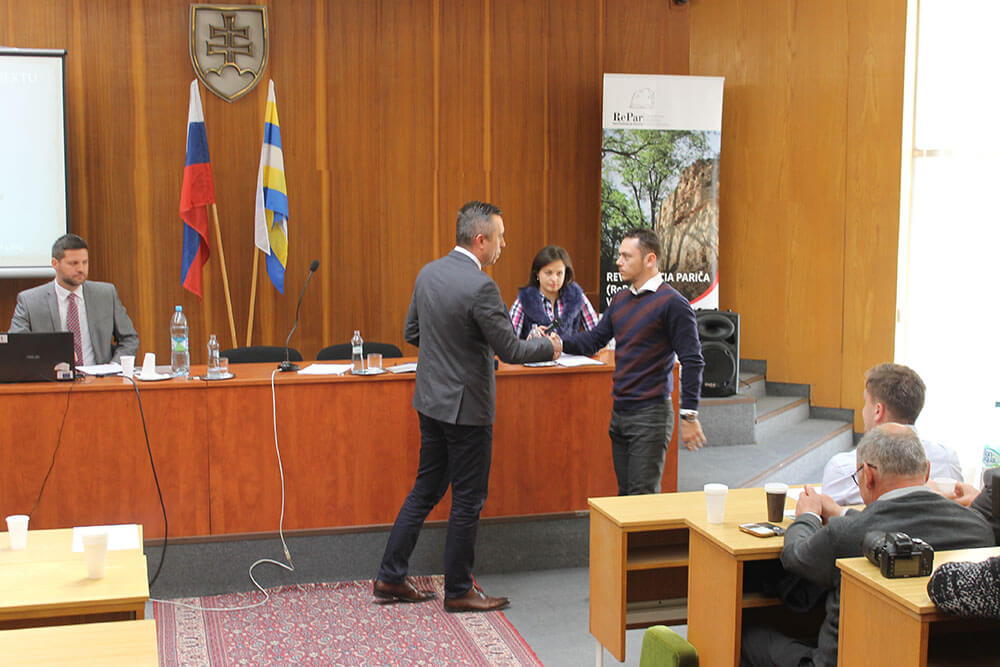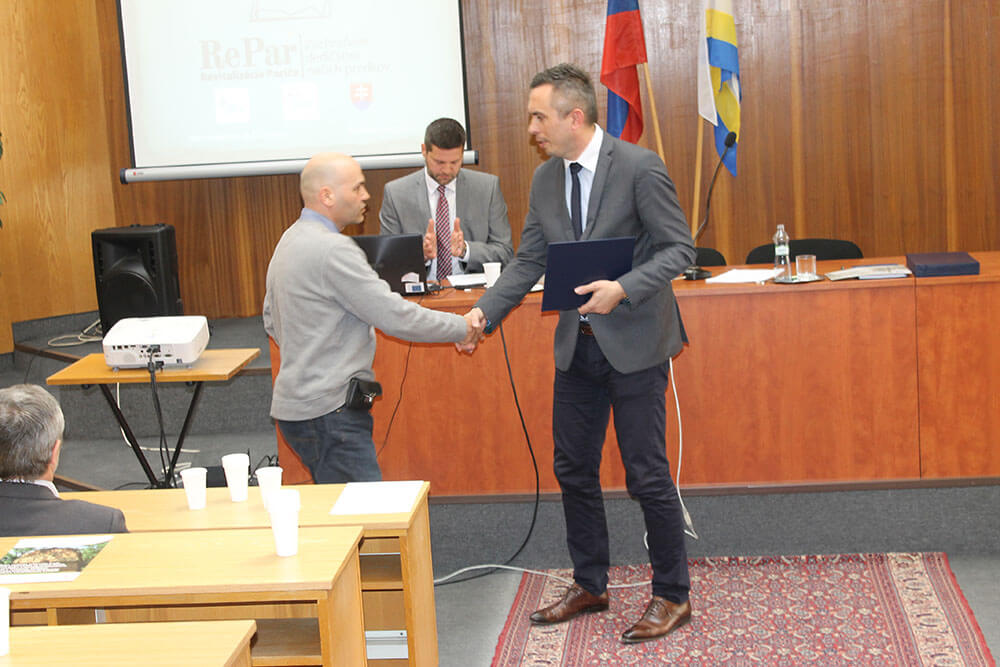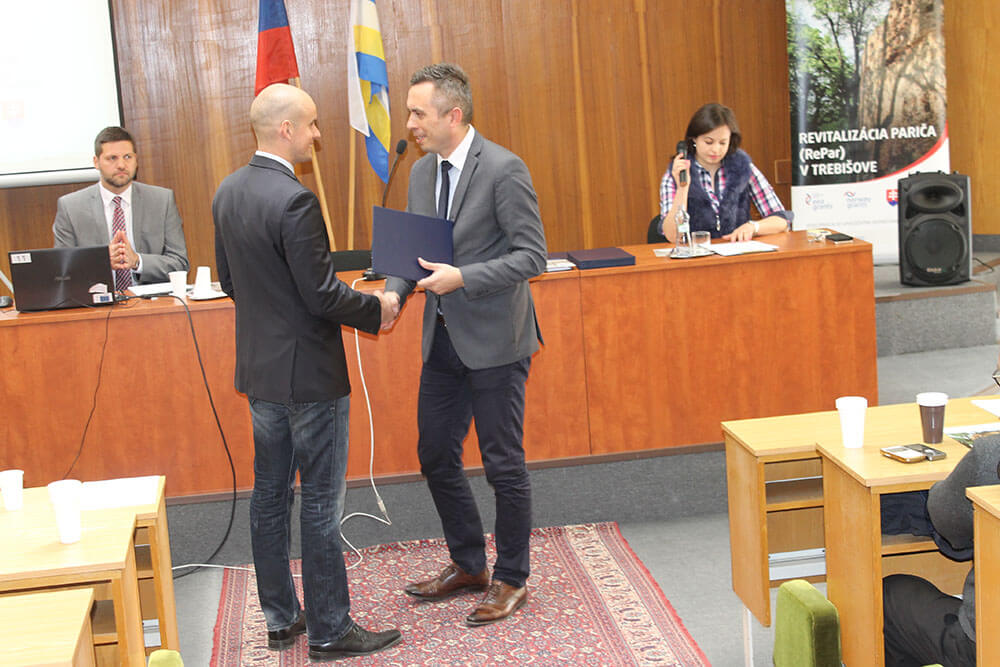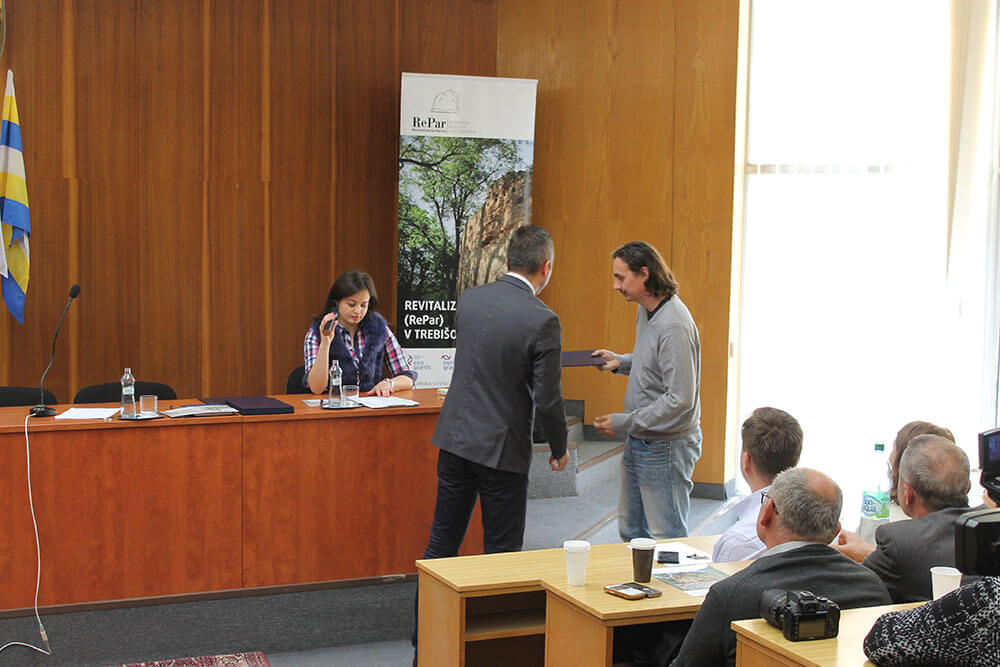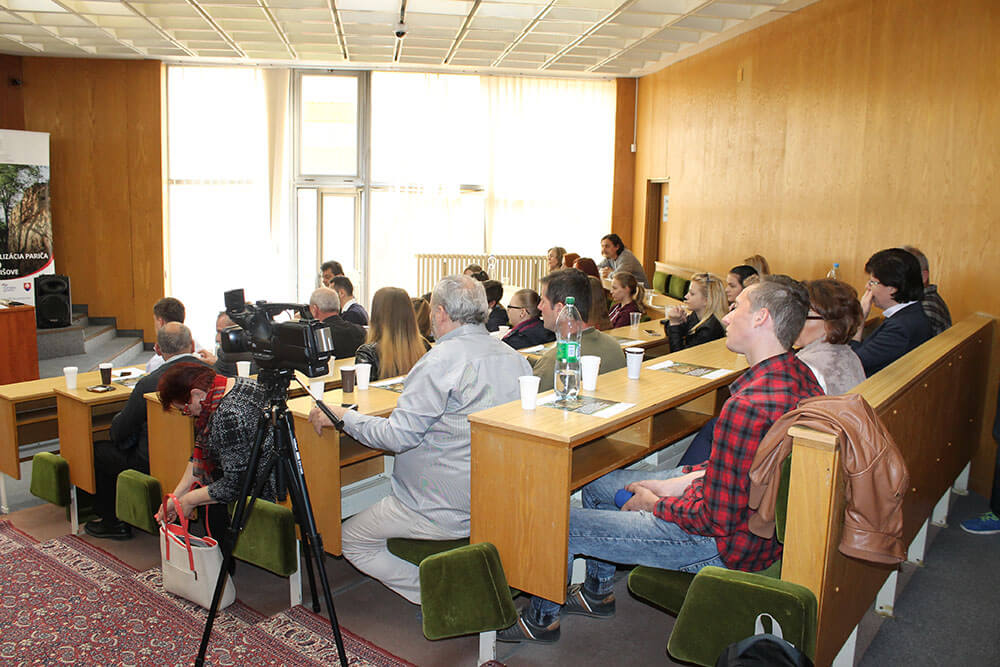News
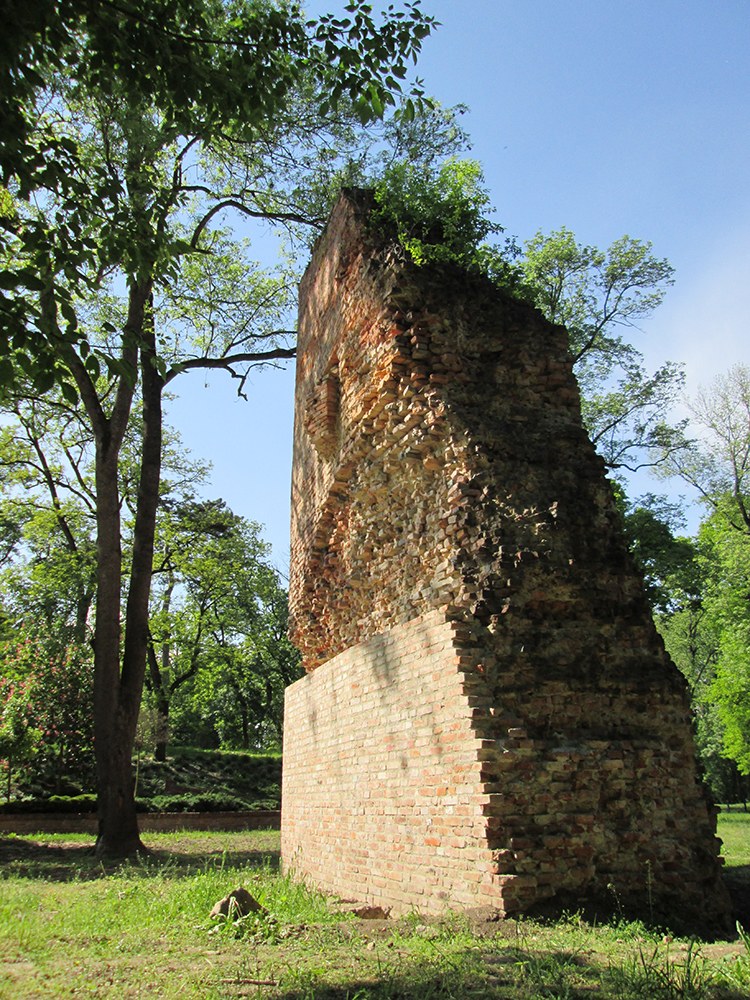
Closing Conference to the Parič Castle Restoration (RePar) Project
The Town Hall of Trebišov was the place of the closing conference to the 'Parič Restoration' (RePar) project.
The former water castle Parič is mostly known to the Trebišov citizens as brick ruins of the building located in the protected historical park near the mausoleum and Baroque-Classicist manor house of the Andrássy family. The premises of the manor house are nowadays occupied by the Museum and Cultural Centre of the South Zemplín.
In 2014, Trebišov became the beneficiary of the grant in the amount of EUR 668,026. The municipality of Trebišov increased this amount by EUR 167,000 from its own funds.
The project is funded from the EEA and Norway Grants through the Financial Mechanism of the European Economic Area and from the State Budget of the Slovak Republic. Completion of Parič Castle and surrounding park restoration.
Probing Brought New Knowledge
Juraj Malec, Archeológia Zemplín s.r.o, Michalovce gave the summary of the historical processes related to the water castle and talked in detail about the course of the recent archaeological survey of Partič that took about two months.
Throughout the previous decades, many basic aspects of the original building were destroyed. On the other hand, new interesting findings, such as a protective bailey wall, were discovered by probing. The project of restoration of the Parič ruins and Andrassy park footpaths was explained by Marián Puci, an architect and the author of the project.
He focused on the main path in the park leading from the main road to the mausoleum passing Parič. The park used to be a private place. It was closed to the public and completely fenced in. It was open to visitors much later, i. e. after social order changes.
Even the roads and paths in the park were different from their today's design as this noble family had their own access paths to different buildings. For example, unlike today they used to get to the mausoleum from the back side. Only later were the park paths mostly adjusted to public needs. Mr. Puci further emphasised that based on their detailed study of historical photographs they had been able to prepare the park path restoration project in close cooperation with the experts of the Regional Institute of Cultural Heritage (Krajský pamiatkový ústav/KPÚ), Košice and had taken into consideration all the changes possible.
Unique Path Lighting
Until recently, there were many disturbing elements on the main path prior to the restoration. Street lights and different manhole lids as well as other inadvisedly placed contemporary elements did not do any good to the look of this relaxation zone. The initial design considered the entire main path to be of andesite. However, due to the restricted budget it was replaced with an asphalt pavement. It will be lined with new benches and litter bins made of corrosion and humidity-resistant materials. The walk through the park ends in front of the mausoleum. The lighting of the entire footpath is unique and gives this place a certain feel of magnificence and tranquillity. It is not only made of energy-saving LED lights but it is also remotely controlled via satellites. This make it possible to change the light illuminance at any time.
The night effects of the path lighting are subdued and intimate, which deepens the power of history and 'genius loci'.
French Garden Destroyed
Vladimír Sobota, KPÚ, Košice, analysed the revitalisation of the city park. He strongly emphasised the message of conservationists in the following sentence: „You have a very rare park and you have to protect it“. He gave a summary of and proposed solutions for park preservation with its integrity being the main objective. He also talked about the overall composition of the park, necessity to record park trees, and about a project of landscape architecture based on historical maps, plans, phonographs and preserved documents.
Historical Facts about the Andrássy Park Presented by Stanislav Štefan
Stanislav Štefan stated it had been proven through historical documents and photographs that there also used to be some other buildings in the park than those currently known. What did not remain in the park were, for instance, green houses or former wine cellars, of which only a torso can be seen today. The beautiful French garden, the fountain of an artistic significance, historical benches and sculptures became the victims of changes that occurred in the time of the Andrássy family presence in the region. In the years 1923 - 1924 the historical manor house was occupied by the Czechoslovak military forces. From 1919 to 1935 it was the headquarters of the frontier forces and after that up to 1978 it served as hospital and medical examination premises.
*Source: https://dolnyzemplin.korzar.sme.sk


